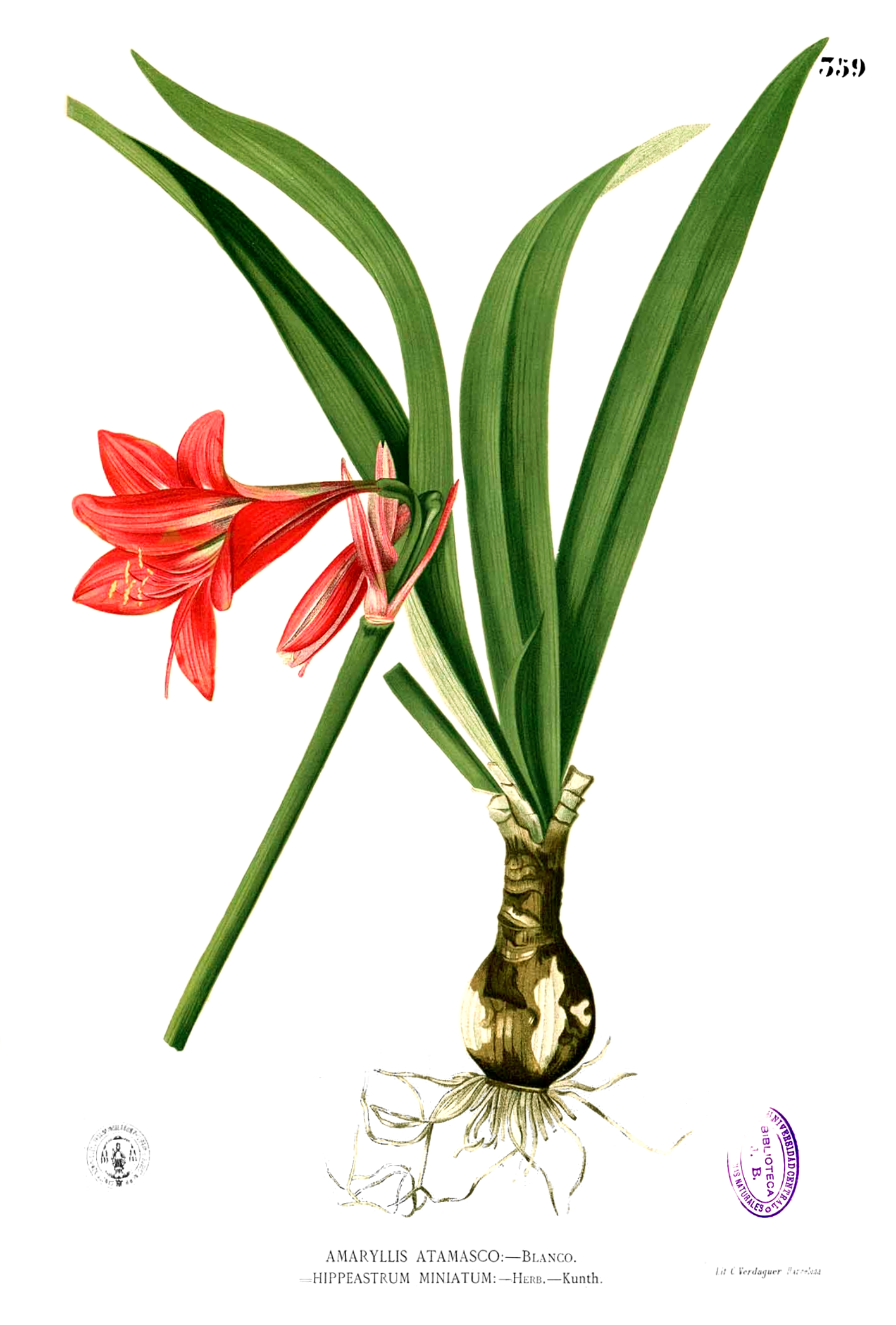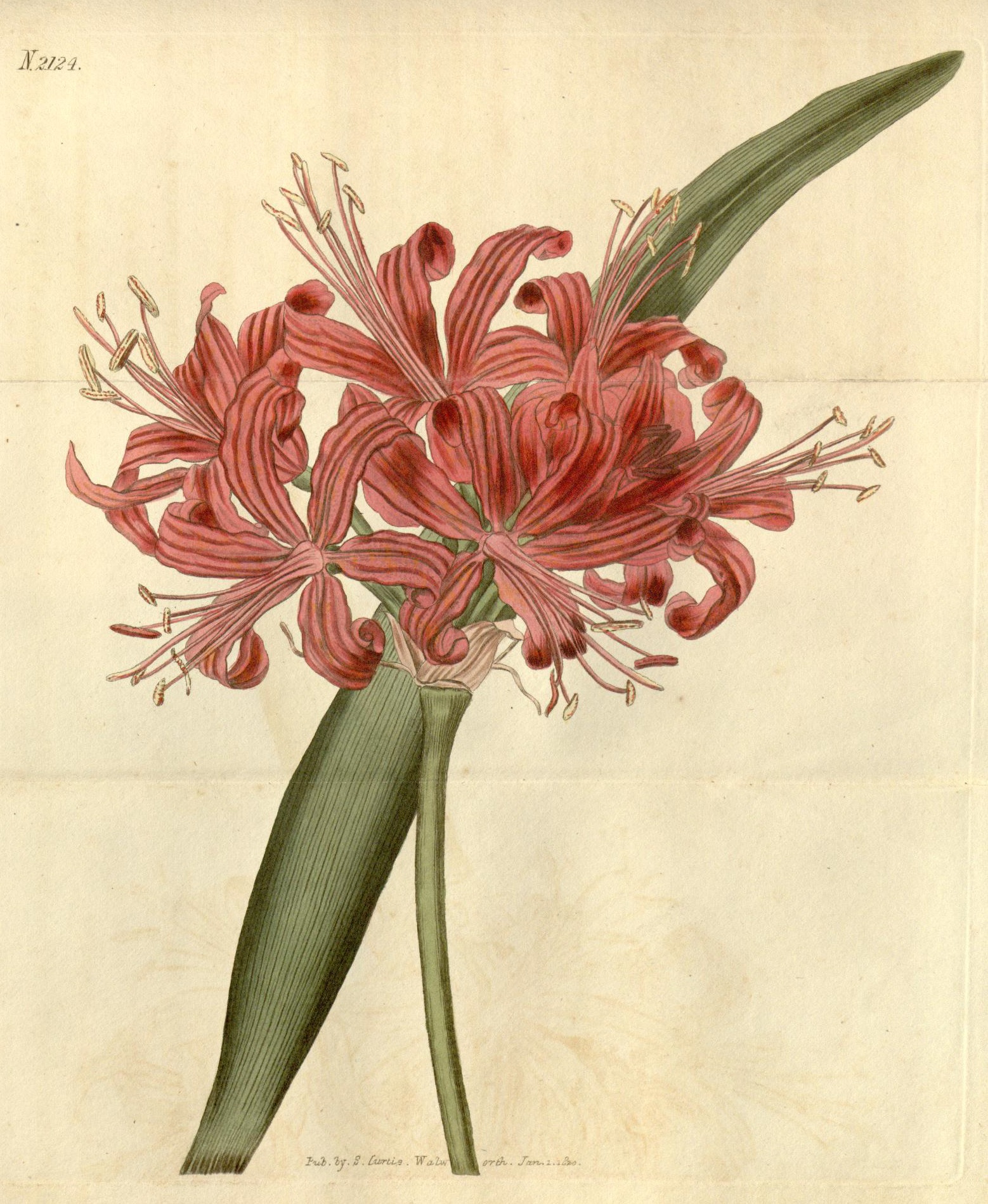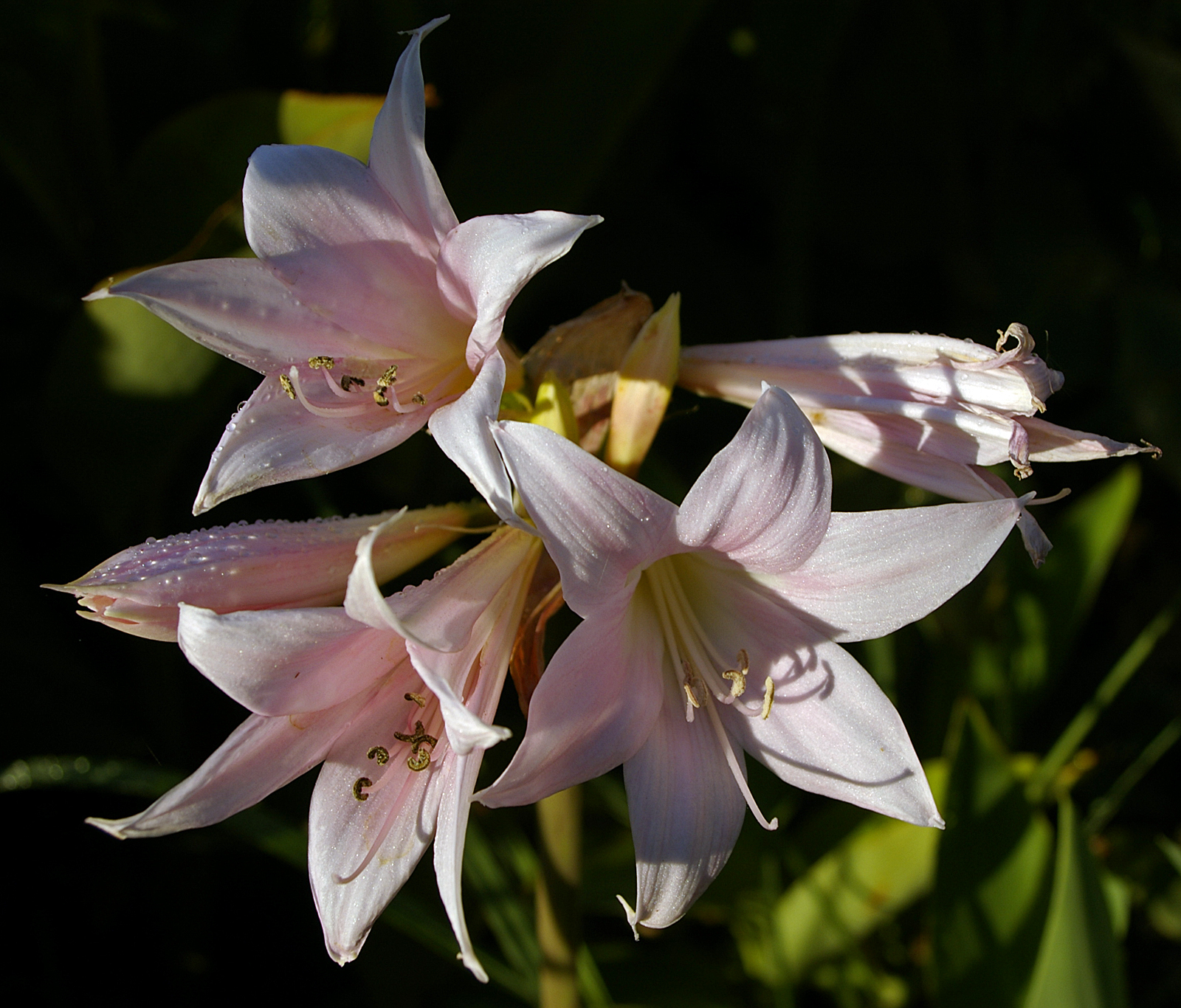|
Peyronellaea Curtisii
''Peyronellaea curtisii'' (leaf scorch) is a fungal plant pathogen first described by Miles Joseph Berkeley and received its current name in 2010. Formerly it was ''Stagonospora'' (syn. ''Stagonosporopsis'') ''curtisii''. It is a cause of leaf blotch, and its substrates include '' Narcissus'', '' Galanthus'' and ''Hippeastrum''. Symptoms ''Peyronellaea curtisii'' causes red-brown spots on leaf tips of ''Narcissus'' and other members of the family Amaryllidaceae; this gives them a scorched appearance that is easily mistaken for frost damage. A yellowish discolouration then spreads down the leaf; more spots may develop as the leaf withers, turns brown and die away. Minute black fungal fruiting bodies may be visible on the foliage. The flowers and flower stalks may also display brown spots and marks. On hippeastrum bulbs the fungus causes red spots that may develop into soft, sunken patches. Leaf scorch fungus can also affect other members of the '' Amaryllidaceae'', including ''A ... [...More Info...] [...Related Items...] OR: [Wikipedia] [Google] [Baidu] |
Fungus
A fungus ( : fungi or funguses) is any member of the group of eukaryotic organisms that includes microorganisms such as yeasts and molds, as well as the more familiar mushrooms. These organisms are classified as a kingdom, separately from the other eukaryotic kingdoms, which by one traditional classification include Plantae, Animalia, Protozoa, and Chromista. A characteristic that places fungi in a different kingdom from plants, bacteria, and some protists is chitin in their cell walls. Fungi, like animals, are heterotrophs; they acquire their food by absorbing dissolved molecules, typically by secreting digestive enzymes into their environment. Fungi do not photosynthesize. Growth is their means of mobility, except for spores (a few of which are flagellated), which may travel through the air or water. Fungi are the principal decomposers in ecological systems. These and other differences place fungi in a single group of related organisms, named the ''Eumycota'' (''true f ... [...More Info...] [...Related Items...] OR: [Wikipedia] [Google] [Baidu] |
Hippeastrum
''Hippeastrum'' () is a genus of about 90 species and over 600 hybrids and cultivars of perennial herbaceous bulbous plants. They generally have large fleshy bulbs and tall broad leaves, generally evergreen, and large red or purple flowers. ''Hippeastrum'' is a genus in the family Amaryllidaceae (subfamily Amaryllidoideae, tribe Hippeastreae, and subtribe Hippeastrineae). The name ''Hippeastrum'', given to it by William Herbert, means "knight's star", although precisely what Herbert meant by the name is not certain. For many years there was confusion among botanists over the generic names ''Amaryllis'' and ''Hippeastrum'', one result of which is that the common name amaryllis is mainly used for cultivars of this genus, often sold as indoor flowering bulbs particularly at Christmas in the northern hemisphere. By contrast the generic name ''Amaryllis'' applies to bulbs from South Africa, usually grown outdoors. The genus is native to tropical and subtropical regions of the A ... [...More Info...] [...Related Items...] OR: [Wikipedia] [Google] [Baidu] |
Sternbergia
''Sternbergia'' is a genus of Eurasian and North African plants in the Amaryllis family, subfamily Amaryllidoideae.Waldstein, Franz de Paula Adam von & Kitaibel, Pál. 1804. Descriptiones et Icones Plantarum Rariorum Hungariae 2: 172 The genus comprises eight recognised species that show a broad distribution throughout the Mediterranean Basin as well as central and southwestern Asia. ''Sternbergia'' contains a number of species of flowering bulbs which rather resemble ''Crocus''. These plants produce golden-yellow goblet-shaped flowers borne on stalks some way above the ground that open during the autumn or early winter. The flower is composed of six stamens and a single style attached to an inferior ovary. Long, strap-like leaves may appear with the flowers or sometime after. The only two exceptions to this are '' S. vernalis'' and '' S. candida'' which flower in the spring, with ''S. candida'' producing striking white flowers. The genus has gained notability due to the w ... [...More Info...] [...Related Items...] OR: [Wikipedia] [Google] [Baidu] |
Sprekelia
''Sprekelia'' was a genus of Mesoamerican plants in the Amaryllis family, subfamily Amaryllidoideae. ''Sprekelia'' plants are sometimes called Aztec lilies or Jacobean lilies although they are not true lilies. This genus is now submerged in ''Zephyranthes''. Taxonomy This genus is named after Johann Heinrich von Spreckelsen (1691–1764), who supplied the plants to Lorenz Heister. ''Sprekelia'' is located in tribe Hippeastreae, subtribe Hippeastrinae. Species ;Accepted species * ''Sprekelia formosissima'' ( L.) Herb. - Mexico from Chihuahua to Chiapas; Guatemala, Honduras; naturalized in Micronesia * ''Sprekelia howardii'' Lehmiller - Guerrero ;formerly included The following two names were coined using the name ''Sprekelia,'' but they refer to species are now generally regarded as better suited to ''Hippeastrum.'' * ''Sprekelia cybister - Hippeastrum cybister'' * ''Sprekelia spectabilis - Hippeastrum angustifolium'' Growth ''Sprekelia formosissima'' is common in cultiv ... [...More Info...] [...Related Items...] OR: [Wikipedia] [Google] [Baidu] |
Nerine
''Nerine'' (nerines, Guernsey lily, Jersey lily, spider lily) is a genus of flowering plants belonging to the family (biology), family Amaryllidaceae, subfamily Amaryllidoideae. They are bulbous perennial plant, perennials, some evergreen, associated with rocky and arid habitats. They bear spherical umbels of lily-like flowers in shades from white through pink to crimson. In the case of deciduous species, the flowers may appear on naked stems before the leaves develop. native plant, Native to South Africa, there are about 20–30 species in the genus. Though described as lilies, they are not significantly related to the true lilies (Liliaceae), but more closely resemble their relatives, ''Amaryllis'' and ''Lycoris (plant), Lycoris''. The genus was established by the Revd. William Herbert (botanist), William Herbert in 1820. Nerines have been widely cultivated and much Hybrid (biology)#Hybrid plants, hybridized worldwide, especially ''Nerine bowdenii'', ''Nerine masoniorum, N. m ... [...More Info...] [...Related Items...] OR: [Wikipedia] [Google] [Baidu] |
Crinum
''Crinum'' is a genus of about 180 species of perennial plants that have large showy flowers on leafless stems, and develop from bulbs. They are found in seasonally moist areas, including marshes, swamps, depressions and along the sides of streams and lakes in tropical and subtropical areas worldwide. Description ''Crinum'' leaves are basal, typically long and strap-shaped, with colors ranging from light green to green. Cytological studies have shown some 27 species of Crinum to be diploid with a normal chromosome count of 2n = 22. Abilio Fernandes found that the Orange River '' Crinum bulbispermum'' had a count of 2n = 66, and some desert '' Crinum macowanii'' 2n = 44. These polyploid species produce seeds that are often parthenogenetic triploid or diploids, lack vigour and seldom grow to mature plants. Taxonomy , the World Checklist of Selected Plant Families lists 105 species of ''Crinum''. Amongst these are: *''Crinum americanum'' L. – southern swamplily, seven siste ... [...More Info...] [...Related Items...] OR: [Wikipedia] [Google] [Baidu] |
Amaryllis
''Amaryllis'' () is the only genus in the subtribe Amaryllidinae (tribe Amaryllideae). It is a small genus of flowering bulbs, with two species. The better known of the two, ''Amaryllis belladonna'', is a native of the Western Cape region of South Africa, particularly the rocky southwest area between the Olifants River Valley and Knysna. For many years there was confusion among botanists over the generic names ''Amaryllis'' and ''Hippeastrum'', one result of which is that the common name "amaryllis" is mainly used for cultivars of the genus ''Hippeastrum'', widely sold in the winter months for their ability to bloom indoors. Plants of the genus ''Amaryllis'' are known as belladonna lily, Jersey lily, naked lady, amarillo, Easter lily in Southern Australia or, in South Africa, March lily due to its propensity to flower around March. This is one of numerous genera with the common name "lily" due to their flower shape and growth habit. However, they are only distantly related ... [...More Info...] [...Related Items...] OR: [Wikipedia] [Google] [Baidu] |
Amaryllidaceae
The Amaryllidaceae are a family of herbaceous, mainly perennial and bulbous (rarely rhizomatous) flowering plants in the monocot order Asparagales. The family takes its name from the genus ''Amaryllis'' and is commonly known as the amaryllis family. The leaves are usually linear, and the flowers are usually bisexual and symmetrical, arranged in umbels on the stem. The petals and sepals are undifferentiated as tepals, which may be fused at the base into a floral tube. Some also display a corona. Allyl sulfide compounds produce the characteristic odour of the onion subfamily (Allioideae). The family, which was originally created in 1805, now contains about 1600 species, divided into about 70–75 genera, 17 tribes and three subfamilies, the Agapanthoideae (agapanthus), Allioideae (onions and chives) and Amaryllidoideae (amaryllis, daffodils, snowdrops). Over time, it has seen much reorganisation and at various times was combined with the related Liliaceae. Since 2009, a very broa ... [...More Info...] [...Related Items...] OR: [Wikipedia] [Google] [Baidu] |
Galanthus
''Galanthus'' (from Ancient Greek , (, "milk") + (, "flower")), or snowdrop, is a small genus of approximately 20 species of bulbous perennial herbaceous plants in the family Amaryllidaceae. The plants have two linear leaves and a single small white drooping bell-shaped flower with six petal-like (petaloid) tepals in two circles (whorls). The smaller inner petals have green markings. Snowdrops have been known since the earliest times under various names, but were named ''Galanthus'' in 1753. As the number of recognised species increased, various attempts were made to divide the species into subgroups, usually on the basis of the pattern of the emerging leaves (vernation). In the era of molecular phylogenetics this characteristic has been shown to be unreliable and now seven molecularly defined clades are recognised that correspond to the biogeographical distribution of species. New species continue to be discovered. Most species flower in winter, before the vernal equi ... [...More Info...] [...Related Items...] OR: [Wikipedia] [Google] [Baidu] |
Ascomycota
Ascomycota is a phylum of the kingdom Fungi that, together with the Basidiomycota, forms the subkingdom Dikarya. Its members are commonly known as the sac fungi or ascomycetes. It is the largest phylum of Fungi, with over 64,000 species. The defining feature of this fungal group is the " ascus" (), a microscopic sexual structure in which nonmotile spores, called ascospores, are formed. However, some species of the Ascomycota are asexual, meaning that they do not have a sexual cycle and thus do not form asci or ascospores. Familiar examples of sac fungi include morels, truffles, brewers' and bakers' yeast, dead man's fingers, and cup fungi. The fungal symbionts in the majority of lichens (loosely termed "ascolichens") such as ''Cladonia'' belong to the Ascomycota. Ascomycota is a monophyletic group (it contains all descendants of one common ancestor). Previously placed in the Deuteromycota along with asexual species from other fungal taxa, asexual (or anamorphic) ascomyce ... [...More Info...] [...Related Items...] OR: [Wikipedia] [Google] [Baidu] |
Narcissus (plant)
''Narcissus'' is a genus of predominantly spring flowering perennial plant, perennial plants of the amaryllis family, Amaryllidaceae. Various common names including daffodil,The word "daffodil" is also applied to related genera such as ''Sternbergia'', ''Ismene (plant), Ismene'' and ''Fritillaria meleagris''. It has been suggested that the word "Daffodil" be restricted to the wild species of the British Isles, ''N. pseudonarcissus''. narcissus, and jonquil are used to describe all or some members of the genus. ''Narcissus'' has conspicuous flowers with six petal-like tepals surmounted by a cup- or trumpet-shaped Corona (plant structure), corona. The flowers are generally white and yellow (also orange or pink in garden varieties), with either uniform or contrasting coloured tepals and corona. ''Narcissus'' were well known in ancient civilisation, both medicinally and botanically, but formally described by Carl Linnaeus, Linnaeus in his ''Species Plantarum'' (1753). The genus ... [...More Info...] [...Related Items...] OR: [Wikipedia] [Google] [Baidu] |
Miles Joseph Berkeley
Miles Joseph Berkeley (1 April 1803 – 30 July 1889) was an English cryptogamist and clergyman, and one of the founders of the science of plant pathology. Life Berkeley was born at Biggin Hall, Benefield, Northamptonshire, and educated at Rugby School and Christ's College, Cambridge. Taking holy orders, he became incumbent of Apethorpe in 1837, and vicar of Sibbertoft, near Market Harborough, in 1868. He acquired an enthusiastic love of cryptogamic botany (lichens) in his early years, and soon was recognized as the leading British authority on fungi and plant pathology. Christ's College made him an honorary fellow in 1883. He was well known as a systematist in mycology with some 6000 species of fungi being credited to him, but his ''Introduction to Cryptogamic Botany'', published in 1857, and his papers on Vegetable Pathology in the ''Gardener's Chronicle'' in 1854 and onwards, show that he had a broad grasp of the whole domain of physiology and morphology as understood in ... [...More Info...] [...Related Items...] OR: [Wikipedia] [Google] [Baidu] |







